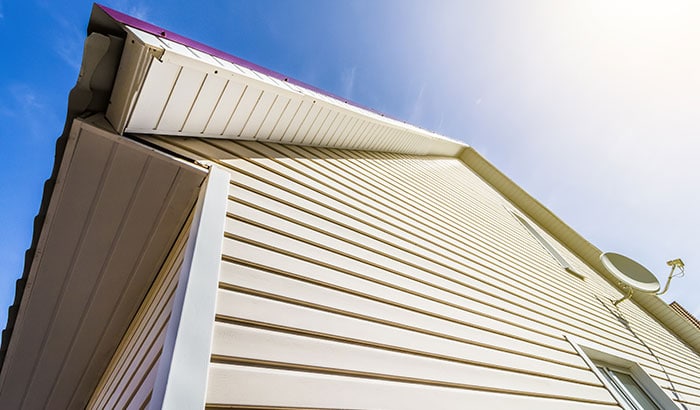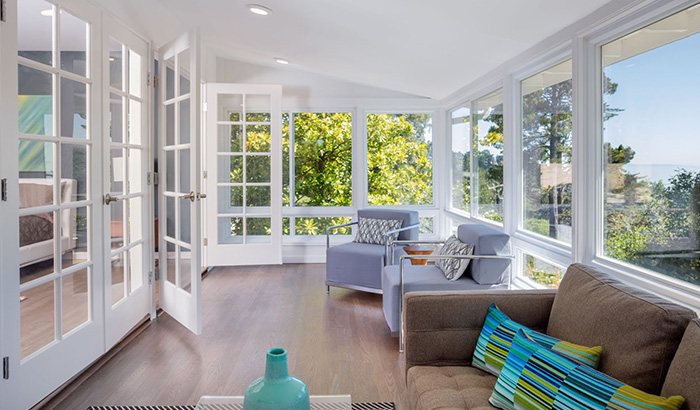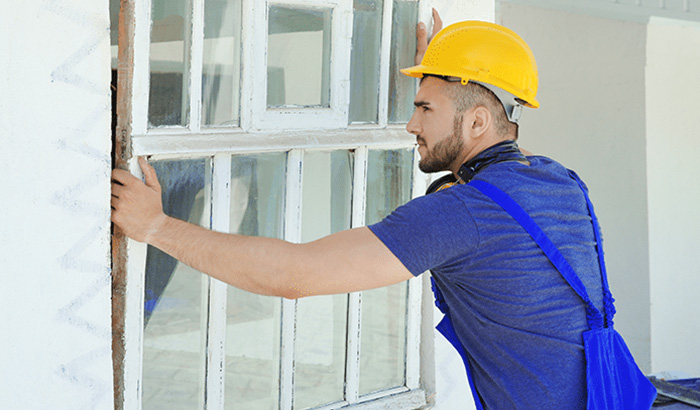Energy Star windows can make your home more comfortable, while creating maximum energy efficiency. Manufacturers that qualify for the label must meet three criteria:
- Manufactured by an Energy Star partner from around the country
- Certified after independent testing by the National Fenestration Rating Council (NFRC)
- Meet NFRC ratings for energy efficiency per the U.S. Department of Energy (DOE)
Energy Star requirements present slightly different optimum requirements for windows used in different parts of the country. The Energy Star classification also applies to doors and skylights, which have similar strict criteria for efficiency.
What Makes an Energy Star Product?
There are five things that make a window energy-efficient and eligible for an Energy Star rating:
- Frame materials made of durable, low-maintenance materials that reduce heat transfer and improve insulating properties.
- Multiple panes separated by air or gas for better insulation, energy savings, impact resistance, and sound insulation.
- Low E glass that features special coatings to keep heat inside and outside in the appropriate season, reflect infrared light, and reflect damaging ultraviolet rays that can fade interior furnishings.
- Gas fills of non-toxic, odorless, colorless argon, krypton, or other gases that insulate better than regular air.
- Warm edge spacers made of metal or hybrid materials that keep the proper amount of distance between windowpanes, which reduces heat transfer.
Windows that meet Energy Star requirements are labeled by the NFRC with numbers that show performance characteristics such as resistance to heat loss (U-value) and how much heat enters the house (Solar Heat Gain Coefficient or SHGC).
What the Numbers Mean
Windows that feature low U-factors, which have a range of 0.20 to 1.20, insulate better, while those with low SHGV (Solar Heat Gain Coefficient) block more heat of the sun. The Energy Department suggests the following values:
Climate Zone U-Factor SHGC
Northern ≤.0.30 ≤0.35-0.40
North Central ≤0.32 ≤0.40
South Central ≤0.35 ≤0.30
Southern ≤0.50 ≤0.27
Lower U-factor and SHGC numbers mean better performance. However, in Northern climates, you should be most concerned with the U-factor, while in the South, SHGC is the more important variable. Energy efficient windows also have other standards that relate to R values (heat resistance) and VT values (visibility.) Some glass is coated to improve its thermal efficiency (insulation properties).
Finding Energy Star Windows for Your Home
The numerical values for the windows are established by the independent tests of the NFRC, whose role is only to assign guidelines to help consumers determine window performance. They do not speak to window quality standards or set guidelines for performance. If the windows have the Energy Star designation, they have not only passed NRCF tests but meet energy standards developed by the DOE.
Interested in buying Energy Star windows to maximize energy efficiency in your home? Mountain States Windows and Siding can provide you with a number of brands that will meet your energy-efficiency and budgetary requirements. Contact us to learn more and to receive a free in-home consultation on Energy Star windows.





